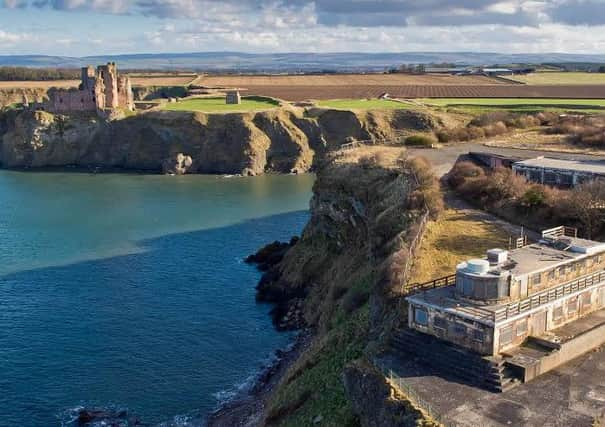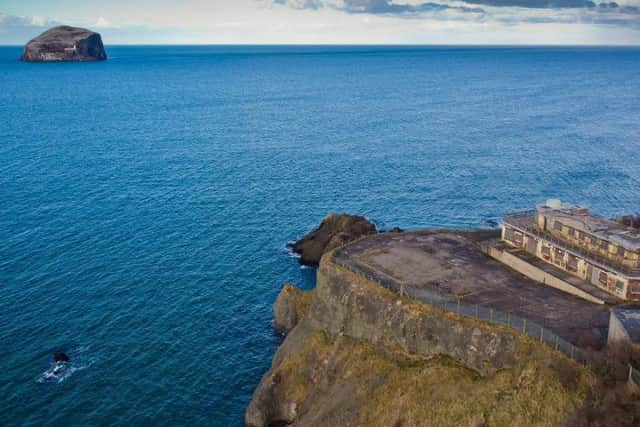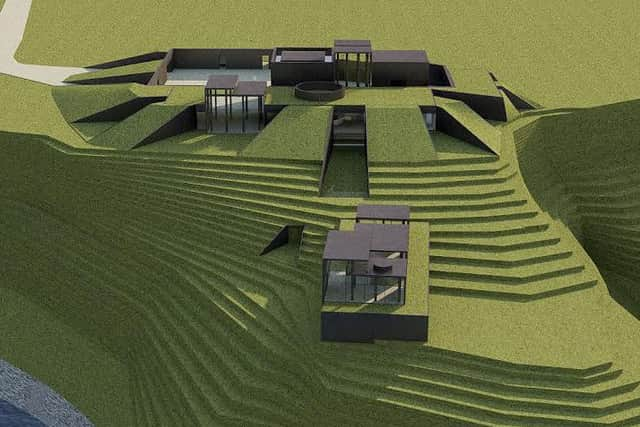Former WW1 radar station on market for £3.5m
This article contains affiliate links. We may earn a small commission on items purchased through this article, but that does not affect our editorial judgement.


The site at Gin Head near Canty Bay, North Berwick, is up for sale with plans approved for a striking 10-bedroom home embedded in the cliffs overlooking the North Sea.
And while perhaps providing the perfect secluded hideaway, there will be no shortage of coastal drama at Gin Head given the property boasts views towards 14th Century Tantallon Castle and iconic Bass Rock seabird sanctuary.
Advertisement
Hide AdAdvertisement
Hide AdTim Clarke-Payton, a private client manager at 1st Asset, based in Chelsea, London, said there was the opportunity to create a “modern day fantasy” at the former Ministry of Defence outpost.


He said: “It is perhaps the ultimate James Bond villain’s lair.
“For the right person, this is the chance to create something incredibly special - a kind of modern-day fantasy.
“It is ideal for someone who wants to escape from the rat race and it offers something different for those who may have bought a Baronial mansion or a shooting estate.


“This property is for someone with real vision.
“We have already had some very strong interest in the property, some from an artist and photographer based in New York but also from others who are considering a boutique hotel.”
Gin Head has been on the market for just over a year with Mr Clarke-Payton recently taking over the sale for the current owner.
Designs for the 10-bedroom home, which includes a pool and spa complex, have been produced by Rome-based architects Claudio Lazzarini and Australian Carl Pickering.


The property is designed over two separate wings in the footprint of the old radar station with the house linked together by covered walkways.
• READ MORE: How Scottish is James Bond?
Advertisement
Hide AdAdvertisement
Hide AdAlthough plans have been approved, the new owner of buyer will decide how to best use the site and the price does not include the building of the new accommodation.
The former radar station was home to MoD scientists who, in 1943, forensically examined captured German radar equipment and helped British Army chiefs to help understand the systems used by German destroyers.


Dozens of people worked at the station at its peak with Gin Head producing the latest developments in radar technology which were deployed ahead of the D Day Landings in June 1944.
On technique developed there was ‘The Window’ which dropped bundles of aluminium from an aircraft to deflect and confuse enemy radar signals.
With the Germans never realising the significance of the strategic site, Gin Head remained as a testing station at the end of the war with activity scaled back during the 1950s.
It was decommissioned during the 1980s and bought by a private company which specialised in developing equipment for the RAF, it is understood, before the site was abandoned in the 1990s.
Mr Clarke-Payton, who declined to reveal the site’s current owner, added: “This exceptionally rare and unique plot offers one of Britain’s most unique development projects.”
DOWNLOAD THE SCOTSMAN APP ON ITUNES OR GOOGLE PLAY